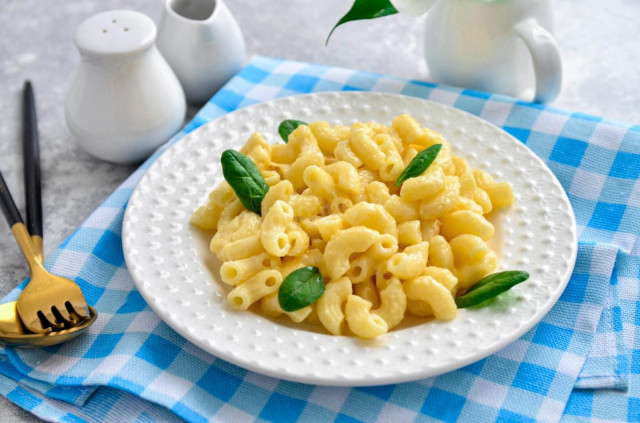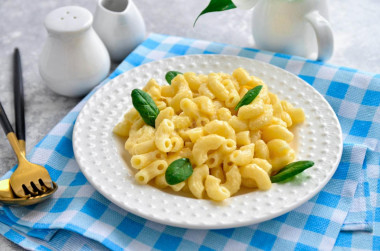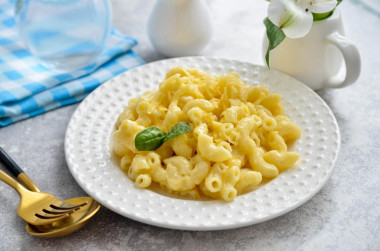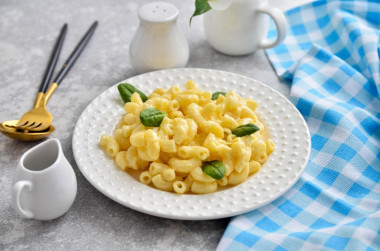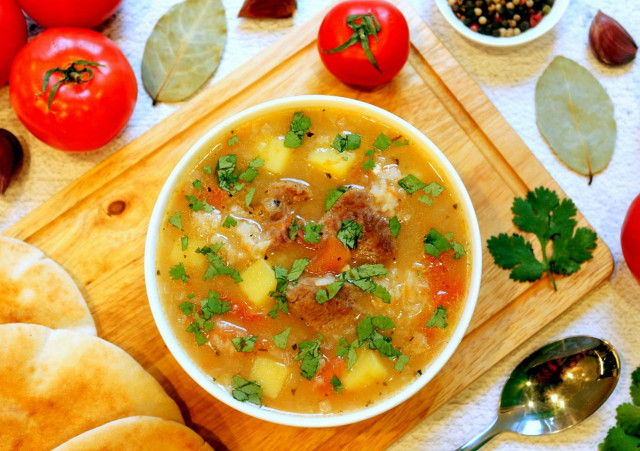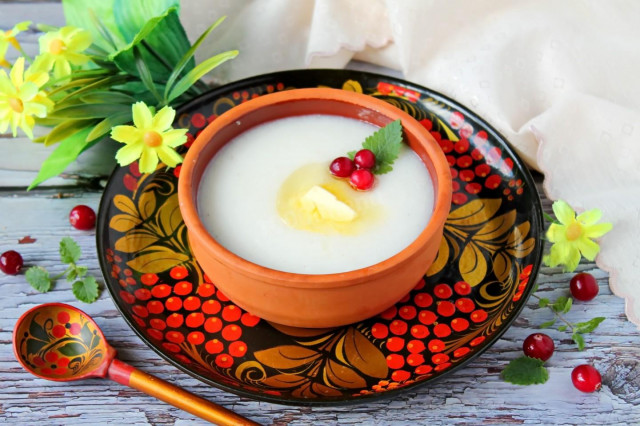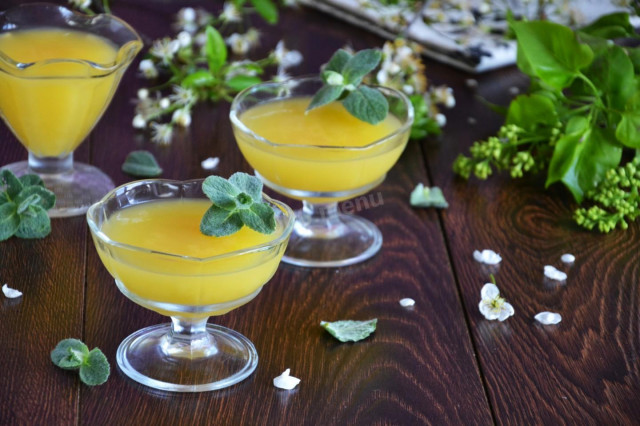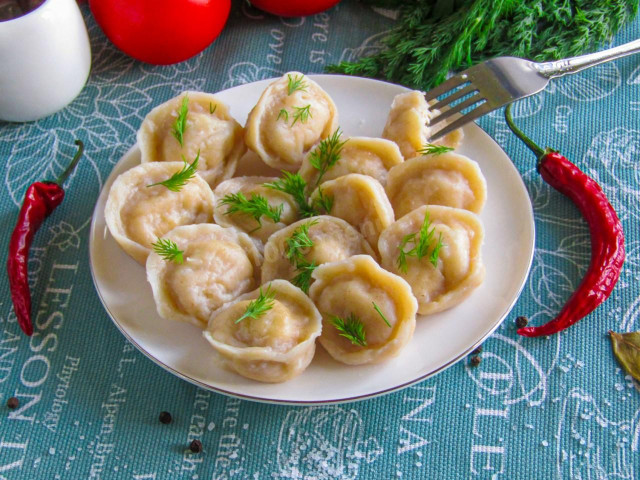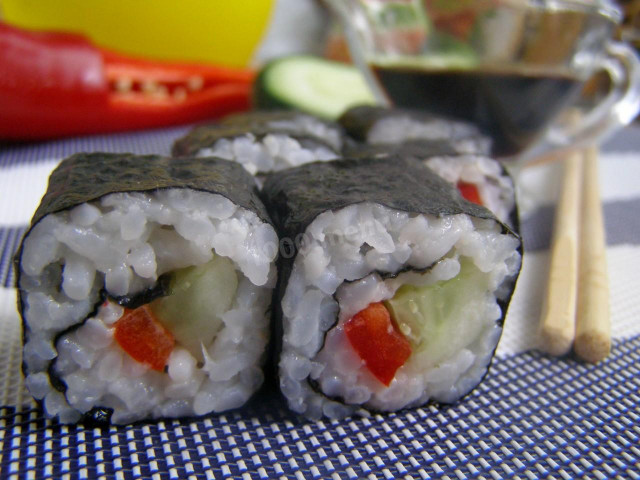Composition / ingredients
Step-by-step cooking
Step 1:
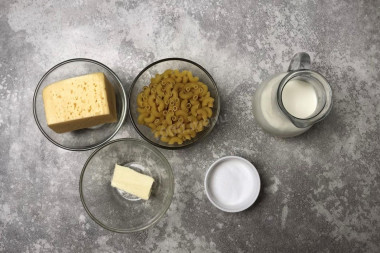
How to make pasta with milk and cheese in a frying pan? Prepare the products. Pasta can take any shape, it does not matter. It's just more convenient for me to work with small springs. For spaghetti, I choose other recipes. But I advise you to pay special attention to the quality of the paste. The most delicious pasta is made from durum wheat. It does not fall apart during cooking and contains more useful substances. Cheese is better to choose the one that melts well.
Step 2:
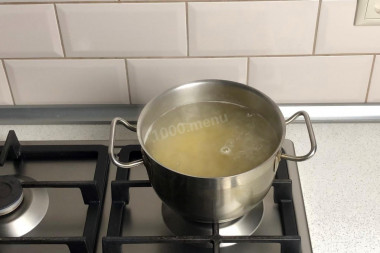
Boil water in a large saucepan for cooking pasta. So that they do not stick together and turn out delicious, take 1 liter of water for every 100 grams of pasta. Salt the water. Fill in the pasta. Be sure to mix them so that they don't stick to the bottom of the pan.
Step 3:
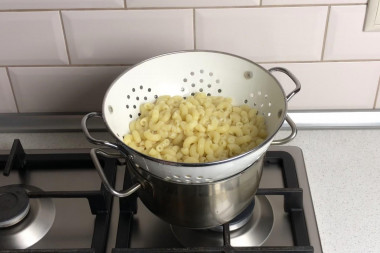
Cook the pasta for a minute less than indicated on the box - we will cook them in milk. They should stay a little firm. Flip the pasta into a colander and leave them over the pan to drain the excess liquid.
Step 4:
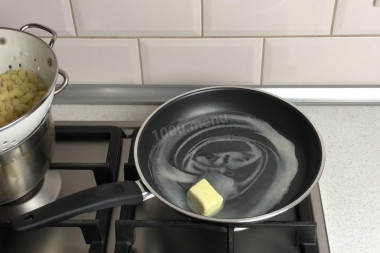
Take a frying pan of such a size that the whole portion of pasta fits into it. Heat the butter on it. Do this on low heat so that the oil does not start to burn.
Step 5:
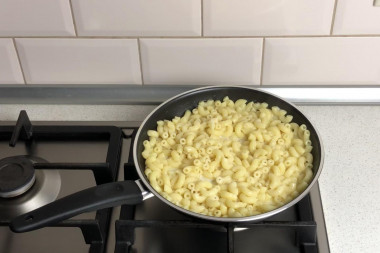
Put the pasta in the pan, mix them with butter. Pour in the milk.
Step 6:
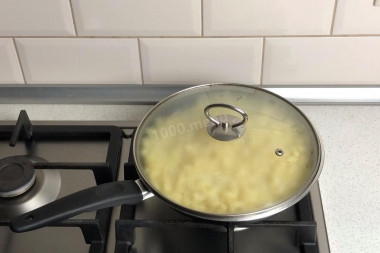
Cover the pan with a lid and leave the pasta to simmer with milk for 2-3 minutes. Make a small fire.
Step 7:
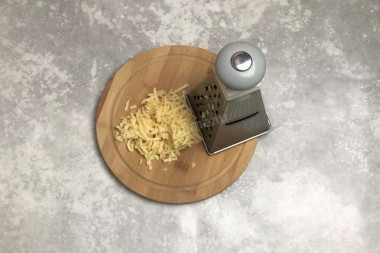
While the pasta is being cooked, grate the cheese on a coarse grater.
Step 8:
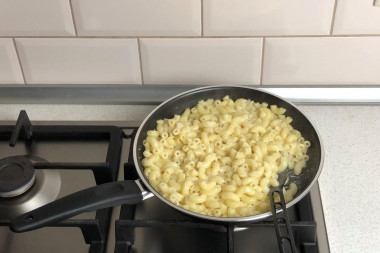
All milk should be absorbed into the pasta, but in no case should it burn! Keep an eye on them in the process.
Step 9:
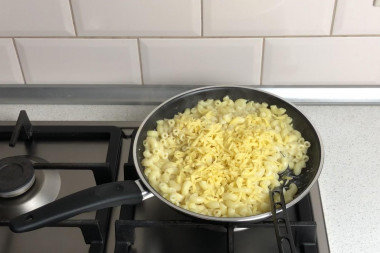
As soon as this happens, pour the cheese into the pan.
Step 10:
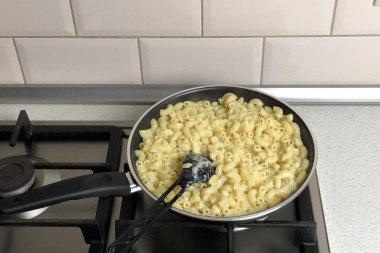
And immediately mix the macaroni and cheese well. The cheese from the high temperature will immediately melt and the pasta will acquire a viscous consistency. Serve them immediately, hot, on the table. When serving, you can sprinkle them with an additional portion of cheese.
We really liked these pasta - cook them very quickly, they turn out very creamy, as if there is a lot of sauce in them. At the same time, each macaroni is enveloped in melted cheese. Very tasty!
How to boil pasta properly? Take a spacious saucepan, pour water at the rate of 100 grams of pasta 1 liter of water. The main thing is that the products float freely in the liquid. Add salt to taste. Bring the water to a boil. It is important to put the pasta in boiling water, otherwise they may stick together. Cook over medium heat, stirring occasionally, until fully cooked or al dente (cooking time is always indicated on the package). Put the finished pasta in a colander and let the liquid drain. It is not necessary to rinse the finished pasta with water. If you do not plan to immediately mix the pasta with the sauce, then in order to avoid sticking hot pasta, you can send them from the colander back into the pan and add a teaspoon of olive oil (or a piece of butter)and mix gently.
Caloric content of the products possible in the composition of the dish
- Whole cow's milk - 68 kcal/100g
- Milk 3.5% fat content - 64 kcal/100g
- Milk 3.2% fat content - 60 kcal/100g
- Milk 1.5% fat content - 47 kcal/100g
- Concentrated milk 7.5% fat content - 140 kcal/100g
- Milk 2.5% fat content - 54 kcal/100g
- Pasta, premium, fortified - 337 kcal/100g
- Pasta, premium, dairy - 309 kcal/100g
- Pasta, premium grade, egg - 342 kcal/100g
- Pasta made from flour of the 1st grade - 333 kcal/100g
- Pasta made of flour in / with - 338 kcal/100g
- Boiled pasta - 135 kcal/100g
- Pasta - 338 kcal/100g
- Dutch cheese - 352 kcal/100g
- Swiss cheese - 335 kcal/100g
- Russian cheese - 366 kcal/100g
- Kostroma cheese - 345 kcal/100g
- Yaroslavsky cheese - 361 kcal/100g
- Altai cheese 50% fat content - 356 kcal/100g
- Soviet cheese - 400 kcal/100g
- Cheese "steppe" - 362 kcal/100g
- Uglich cheese - 347 kcal/100g
- Poshekhonsky cheese - 350 kcal/100g
- Lambert cheese - 377 kcal/100g
- Appnzeller cheese with 50% fat content - 400 kcal/100g
- Chester cheese with 50% fat content - 363 kcal/100g
- Edamer cheese with 40% fat content - 340 kcal/100g
- Cheese with mushrooms of 50% fat content - 395 kcal/100g
- Emmental cheese with 45% fat content - 420 kcal/100g
- Gouda cheese with 45% fat content - 356 kcal/100g
- Aiadeus cheese - 364 kcal/100g
- Dom blanc cheese (semi-hard) - 360 kcal/100g
- Lo spalmino cheese - 61 kcal/100g
- Cheese "etorki" (sheep, hard) - 401 kcal/100g
- White cheese - 100 kcal/100g
- Fat yellow cheese - 260 kcal/100g
- Altai cheese - 355 kcal/100g
- Kaunas cheese - 355 kcal/100g
- Latvian cheese - 316 kcal/100g
- Limburger cheese - 327 kcal/100g
- Lithuanian cheese - 250 kcal/100g
- Lake cheese - 350 kcal/100g
- Gruyere cheese - 396 kcal/100g
- Butter 82% - 734 kcal/100g
- Amateur unsalted butter - 709 kcal/100g
- Unsalted peasant butter - 661 kcal/100g
- Peasant salted butter - 652 kcal/100g
- Melted butter - 869 kcal/100g
- Salt - 0 kcal/100g

